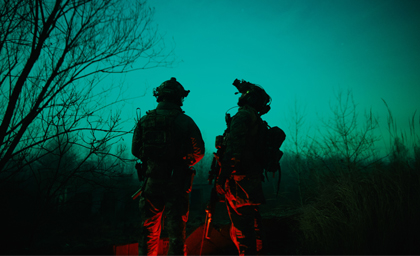Using smart watches and AI to protect our military
University of South Australia researchers are proving that smart watches and AI algorithms could better protect military personnel against biological and chemical threats, as well as illness.
The world-first project will develop statistical machine learning algorithms that detect early signs of infection or contamination by tracking a person’s vital signs such as sleep, skin temperature, and heart rate from wearable devices like smart watches.
“If we can make use of this passively recorded data to detect the earliest molecular and cellular physiological events, caused by pathogen exposure, even prior to active infection, it could have a huge impact.”
Professor Siobhan Banks, Lead Researcher, UniSA
Lead researcher, UniSA Professor Siobhan Banks, says the goal is to ensure people working in the armed forces are fit for duty, and can operate more safely.
“Most diagnostic methods involve sampling blood or nasal fluid to detect pathogens responsible for infections,” Professor Banks says.
“This approach is costly, time consuming and requires a laboratory for analysis.
“Comparatively, changes in vital signs arise very quickly after infection, as part of the immune response.
“The timely data from wearable devices could flag physiological and behavioural changes much earlier than symptoms appear.”
Researchers say that wearable devices, which contain sophisticated sensors, could be easily deployed to continuously collect thousands of hours of vital sign data.
“If we can use this passively recorded data to detect the earliest molecular and cellular physiological events, caused by pathogen exposure, even prior to active infection, it could have a huge impact,’ Professor Banks says.
“Military personnel could be isolated sooner, preventing the spread of infection, while instigating early treatment.”

Photo by Aleksey Kashmar on Unsplash
This supports a key strategic mission for the Department of Defence, which is focused on enabling Australia’s joint force to operate safely and effectively in contested chemical, biological, radiological, and nuclear (CBRN) threat environments.
Chief Defence Scientist Professor Tanya Monro AC says the UniSA-led research could enhance defence capability in warfare, including early detection of chemical or biological threats.
The project is being led by UniSA in collaboration with the Australian Department of Defence, industry partner Insight Via Artificial Intelligence and the University of Adelaide.
The research is supported by the Commonwealth of Australia as represented by the Defence Science and Technology Group of the Department of Defence and the Defence Artificial Intelligence Research Network (DAIRNet).





